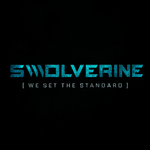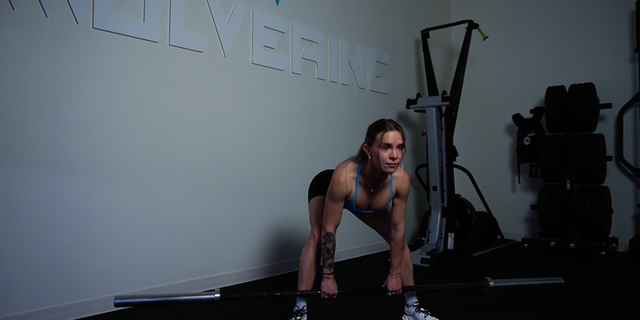In the search for natural muscle-building supplements, few ingredients have gained as much momentum as ecdysterone. Touted as a plant-based anabolic, ecdysterone has been linked to increased protein synthesis, lean muscle growth, and improved recovery — all without the harsh side effects of anabolic steroids.
But not all ecdysterone is created equal.
If you’ve started researching supplements, you’ve likely come across two competing terms: Beta Ecdysterone and Ecdysterone B. While they may sound similar, they’re not interchangeable — and the form you choose could make a big difference in your results.
This article breaks down the science, structural differences, clinical evidence, and effectiveness of Beta Ecdysterone vs Ecdysterone B to help you determine which version is best for building muscle, accelerating recovery, and maximizing your performance goals.
What Is Ecdysterone?
Ecdysterone is a naturally occurring compound classified as a phytoecdysteroid, found in plants like Rhaponticum carthamoides (also known as Leuzea or Maral root), Spinach, and Quinoa. It belongs to a group of steroid-like molecules that plants use for defense, but in humans, it has shown powerful adaptogenic and anabolic properties.
Often referred to as a "natural anabolic," ecdysterone has been studied for its ability to:
-
➤ Increase muscle protein synthesis
-
➤ Improve nitrogen retention
-
➤ Support lean mass gains
-
➤ Enhance recovery post-exercise
Unlike synthetic anabolic steroids, ecdysterone doesn’t bind to androgen receptors, which means it doesn’t disrupt your hormone levels or cause suppression.
“Ecdysterone exhibits anabolic effects without typical androgenic side effects and is therefore regarded as an attractive natural compound for improving muscle mass and strength,”
Parr et al., Archives of Toxicology
Thanks to its unique mechanism and minimal side effects, ecdysterone has surged in popularity among bodybuilders, athletes, and anyone looking to optimize body composition naturally.
How Ecdysterone Works: Mechanism of Action
Ecdysterone, specifically 20-hydroxyecdysone, works through a unique non-androgenic anabolic pathway, making it fundamentally different from steroids or SARMs. It does not bind to the androgen receptor — the main pathway used by testosterone or anabolic steroids — but still promotes muscle growth and strength.
Instead, ecdysterone exerts its effects primarily through:
➤ Estrogen Receptor Beta (ERβ) Activation
Ecdysterone is believed to bind to estrogen receptor beta (ERβ) in skeletal muscle, leading to anabolic gene expression without the feminizing or suppressive effects associated with estrogen or testosterone.
“Ecdysterone’s anabolic effect is likely mediated by the estrogen receptor beta, offering muscle-building benefits without hormonal disruption.”
— Parr et al., Scientific Reports
➤ PI3K/Akt and mTOR Pathway Stimulation
This pathway is central to muscle protein synthesis. Ecdysterone upregulates signaling cascades that trigger mTOR, leading to increased translation of muscle-building proteins like myosin and actin.
“Ecdysterone stimulates protein synthesis through PI3K/Akt activation, promoting hypertrophy independently of androgenic pathways.”
— Gorelick-Feldman et al., Biological & Pharmaceutical Bulletin
➤ Increased Nitrogen Retention and Muscle Cell Differentiation
Ecdysterone supports nitrogen balance, which enhances recovery and preserves lean tissue during caloric deficits or high training loads. It may also stimulate myoblast differentiation, contributing to muscle growth.
In short, ecdysterone acts as a non-hormonal anabolic agent, mimicking many benefits of steroids — like strength, size, and recovery — without suppressing testosterone or triggering androgenic side effects.
Benefits of Ecdysterone for Muscle Growth, Recovery, and Performance
Ecdysterone is often hailed as the “natural anabolic” — and for good reason. Multiple peer-reviewed studies and anecdotal reports support its ability to build lean mass, accelerate recovery, and enhance performance, without the hormonal side effects of traditional anabolic steroids or SARMs.
Let’s break down the most relevant benefits in greater depth:
➤ 1. Promotes Lean Muscle Growth (Anabolic Without Androgenic Side Effects)
One of ecdysterone’s most celebrated properties is its ability to stimulate muscle protein synthesis (MPS) — the process by which your body builds new muscle tissue. Unlike anabolic steroids, ecdysterone works independently of the androgen receptor, instead activating the PI3K/Akt/mTOR pathway, a key signal transduction route for skeletal muscle hypertrophy.
“Ecdysterone significantly increased muscle mass and strength compared to placebo. The anabolic effect was comparable to some synthetic steroids like metandienone, but without the typical side effects.”
— Parr et al., Scientific Reports
Because it doesn’t interfere with the body’s hormonal axis, users experience gains without suppression, acne, water retention, or virilization effects seen with AAS.
➤ 2. Enhances Muscle Recovery and Reduces Soreness
Recovery is critical for performance — and ecdysterone appears to facilitate faster regeneration of muscle tissue. This benefit likely comes from its impact on amino acid uptake, nitrogen retention, and increased mitochondrial biogenesis.
“Ecdysterone helped optimize adaptation to training, accelerating post-exercise recovery and muscle repair.”
— Wilborn et al., Journal of the International Society of Sports Nutrition
Anecdotally, lifters report less DOMS (delayed onset muscle soreness) and quicker return to training intensity after hard sessions — making it a strong addition for hypertrophy or performance-based training blocks.
➤ 3. Preserves Testosterone and Hormonal Balance
Because ecdysterone does not bind to androgen receptors, it does not suppress endogenous testosterone production or affect estrogen pathways — making it highly attractive for natural lifters or those in post-cycle therapy (PCT) who wish to maintain gains without further disrupting hormone levels.
“Ecdysteroids exert their anabolic effects without interacting with the androgen receptor, thus avoiding endocrine side effects commonly observed with anabolic agents.”
— Gorelick-Feldman et al., Biological & Pharmaceutical Bulletin
This benefit is particularly important for women, older athletes, and post-cycle users aiming to optimize their recovery without added hormonal stress.
➤ 4. Boosts Endurance and Training Capacity
Emerging research suggests that ecdysterone may improve oxygen transport, hemoglobin levels, and cardiovascular efficiency, which can enhance endurance performance — especially in longer training sessions or metabolic-style resistance training.
“Ecdysteroids increase resistance to fatigue by improving mitochondrial function and enhancing muscular oxygen uptake and recovery.”
— Syrov et al., Pharmacology and Toxicology of Ecdysteroids
This makes ecdysterone especially valuable for CrossFit athletes, combat sports, high-volume training, and hybrid lifters.
➤ 5. Supports Fat Loss and Recomposition
While not a stimulant or thermogenic, ecdysterone supports fat loss indirectly by preserving lean muscle mass during caloric deficits. By maintaining high levels of protein synthesis and nitrogen retention, it can help preserve muscle even in aggressive cutting phases.
The result: better body composition, improved muscle definition, and reduced metabolic slowdown — all without water retention or estrogenic effects.
➤ 6. Legal and Non-Suppressive Alternative to Anabolics
Because ecdysterone is derived from plants (such as Rhaponticum carthamoides), it’s widely considered safe, non-toxic, and legally available in most countries as a dietary supplement. As of now, it’s not classified as a controlled substance in the U.S. or most European countries — although it is listed on WADA’s monitoring program.
For legal, safety, and use considerations, see the full breakdown in our article What Is Ecdysterone?
This makes it one of the few natural muscle-building supplements that can offer real anabolic results — without triggering drug tests or requiring post-cycle therapy.
Beta Ecdysterone vs Ecdysterone B: What’s the Difference?
Though both fall under the umbrella of ecdysteroids, Beta Ecdysterone and Ecdysterone B differ in their chemical structure, source, and purity — all of which impact their bioavailability and effectiveness.
➤ Beta Ecdysterone
Beta Ecdysterone is the most widely studied and commercially available form of ecdysterone. It is chemically known as 20-hydroxyecdysone, and it’s the version used in nearly all peer-reviewed clinical studies exploring ecdysterone’s anabolic potential.
“20-Hydroxyecdysone, also known as Beta Ecdysterone, stimulates protein synthesis in skeletal muscle cells via a PI3K/Akt pathway, similar to IGF-1,”
Gorelick-Feldman et al., Biochemical and Biophysical Research Communications
It’s typically extracted from plant sources such as Leuzea carthamoides or Cyanotis vaga, and standardized for purity between 90–98%. This high-purity version is what you’ll find in premium ecdysterone supplements.
➤ Ecdysterone B
Ecdysterone B is often a less common variant or a lower-grade extract that may contain a mix of various ecdysteroids, including minor analogs of 20-hydroxyecdysone. Some manufacturers label impure or blended versions as “Ecdysterone B” to differentiate from higher-purity forms, though this term is not officially recognized in clinical literature.
There is little to no clinical research specifically supporting the effectiveness of “Ecdysterone B” as a standalone compound — and its name is sometimes used in marketing to imply a stronger or alternate form, when in fact it may be a diluted or less bioavailable version.
Which One Builds More Muscle? Beta Ecdysterone vs Ecdysterone B
When it comes to real-world gains and clinical backing, Beta Ecdysterone is the clear winner. It’s not only the most researched — it’s the only form consistently linked to increased lean mass, strength, and protein synthesis in human trials.
“In a randomized controlled trial, subjects taking 200 mg of 20-hydroxyecdysone (Beta Ecdysterone) for 10 weeks gained significantly more muscle mass and strength than those on placebo or other performance supplements.”
— Isenmann et al., Archives of Toxicology
Ecdysterone B, on the other hand, has no peer-reviewed research validating its effectiveness. It may be used as a catch-all for non-standardized ecdysteroid blends, which means dosage accuracy, purity, and anabolic potential are highly questionable.
➤ Summary:
| Feature | Beta Ecdysterone | Ecdysterone B |
|---|---|---|
| Backed by human studies | ✅ | ❌ |
| Purity | 90–98% standardized | Often unknown or mixed |
| Commonly found in | High-quality supplements | Proprietary blends, low-cost formulas |
| Proven anabolic effect | ✅ | ❌ |
| Bioavailability | High (20-hydroxyecdysone) | Variable |
If your goal is hypertrophy, strength, or recovery, go with the form that’s actually been proven to work — and that’s Beta Ecdysterone. Anything else is a gamble.
Bioavailability and Absorption: Does the Form Matter?
Yes — the form absolutely matters. Beta Ecdysterone, also known as 20-hydroxyecdysone, is the most bioavailable and well-absorbed version of ecdysteroids in the human body. This is the specific compound measured in most clinical trials showing muscle growth and performance enhancement.
“20-hydroxyecdysone displays strong anabolic activity by stimulating protein synthesis in skeletal muscle, yet without binding to androgen receptors or causing androgenic side effects.”
— Gorelick-Feldman et al., American Journal of Physiology
In contrast, Ecdysterone B lacks clear structural or absorption data — in many cases, it may refer to unstandardized plant extracts that do not guarantee the active 20-hydroxyecdysone content, making it less reliable and potentially ineffective.
This difference in purity and structure can make or break the results you're aiming for. The higher the standardization of Beta Ecdysterone, the more consistent and measurable the outcomes — particularly when used in a daily protocol for lean mass and strength.
What to Look for in an Ecdysterone Supplement
If you're serious about results, don’t fall for vague labels. Choose supplements that clearly state:
➤ Standardized Beta Ecdysterone (20-Hydroxyecdysone)
Look for a minimum of 90% purity. This ensures you’re getting the active compound proven to support protein synthesis and lean muscle gains.
➤ Third-Party Testing
Reputable brands will verify purity and potency through third-party labs. This protects against adulteration or filler-heavy products.
➤ Transparent Labeling
Avoid proprietary blends. If a brand won’t disclose how much Beta Ecdysterone it contains, it likely isn’t enough to be effective.
“Many ecdysteroid products on the market do not contain the labeled amount of 20-hydroxyecdysone, which may account for inconsistent user results.”
— Parr et al., Molecules
➤ Clinical Dosages (200–500 mg/day)
This is the range shown in studies to drive muscle growth and strength. Anything far below this threshold is unlikely to be effective.
By focusing on form, dosage, purity, and transparency, you dramatically increase your chances of seeing results — and avoid wasting your money on underdosed or mislabeled products.
Which One Is Better for Muscle Growth and Performance?
When comparing Beta Ecdysterone vs Ecdysterone B, the clear winner for muscle growth, recovery, and performance is Beta Ecdysterone — specifically, the purified form known as 20-hydroxyecdysone.
Clinical studies have consistently shown that Beta Ecdysterone can:
➤ Stimulate mTOR signaling and protein synthesis in muscle
➤ Improve nitrogen retention and lean body mass
➤ Boost strength and endurance in resistance-trained athletes
➤ Do so without affecting androgen receptors, avoiding the risks of anabolic steroids
“Ecdysterone exhibits anabolic effects on skeletal muscle comparable to anabolic steroids, but without the androgenic side effects.”
— Isenmann et al., Archives of Toxicology
In contrast, Ecdysterone B lacks clear structural identity, minimal bioavailability data, and no direct evidence supporting its use in muscle growth or athletic performance. It’s often a marketing label rather than a well-characterized compound.
If your goal is hypertrophy, strength gains, or body recomposition, then standardized Beta Ecdysterone is the form you should be using — backed by research, precision, and results.
Are There Any Side Effects of Ecdysterone?
Ecdysterone is widely regarded as one of the safest natural anabolic compounds available. Unlike anabolic steroids or SARMs, it does not suppress testosterone, does not bind to androgen receptors, and does not disrupt the endocrine system. That said, here’s a breakdown of what the science — and anecdotal user reports — actually say about side effects.
➤ No Hormonal Suppression or Liver Toxicity
Ecdysterone is non-hormonal, meaning it won’t suppress your body’s natural testosterone production. Clinical studies have repeatedly shown no changes in testosterone, estrogen, or LH/FSH levels in participants.
“Ecdysterone administration did not result in any adverse hormonal or biochemical changes in human subjects over the course of the study.”
— Isenmann et al., Archives of Toxicology
It also doesn’t require post-cycle therapy (PCT) because it doesn’t interfere with your HPTA (hypothalamic–pituitary–testicular axis).
➤ Minimal GI or Digestive Issues
A small percentage of users report mild gastrointestinal discomfort (e.g., bloating or upset stomach), typically when taken on an empty stomach or in high doses exceeding 500 mg/day. These issues usually resolve by lowering the dose or taking it with food.
➤ No Cardiovascular or Neurotoxic Effects Reported
Unlike stimulants or steroidal compounds, ecdysterone does not increase blood pressure, heart rate, or cause central nervous system overstimulation. Long-term animal studies have shown no evidence of cardiotoxicity or neurotoxicity at common doses.
➤ Purity and Product Quality Matter
Most side effect concerns come not from ecdysterone itself, but from low-quality products containing:
-
Underdosed extracts
-
Contaminants or banned substances
-
Mislabeling or proprietary blends
Always choose a product that’s third-party tested, lists standardized 20-hydroxyecdysone content, and avoids proprietary blends. See: What Is Ecdysterone?
✅ Summary: Ecdysterone Side Effect Profile
| Effect | Evidence |
|---|---|
| Testosterone suppression | ❌ None observed |
| Liver toxicity | ❌ None observed |
| Cardiovascular stress | ❌ None observed |
| GI discomfort | ⚠️ Rare, mild, and dose-dependent |
| Acne/hair loss/estrogen | ❌ Not applicable (non-androgenic) |
In short: Ecdysterone is well-tolerated, non-suppressive, and safe for most users, including both men and women, at clinically studied doses of 200–500 mg/day.
Legal Status and Safety of Beta Ecdysterone and Ecdysterone B
Both Beta Ecdysterone and Ecdysterone B are currently legal to purchase and use as dietary supplements in the United States and most countries. They are not classified as anabolic steroids and do not fall under any federal controlled substance regulations.
However, WADA (World Anti-Doping Agency) has placed ecdysteroids on their monitoring program due to their potential anabolic activity. While they are not currently banned, this means elite athletes should exercise caution, as future restrictions are possible.
“Ecdysterone was added to the WADA Monitoring Program in 2020 due to its performance-enhancing potential.”
— World Anti-Doping Agency (WADA)
Safety Profile
Both forms are considered non-hormonal and safe at appropriate dosages. Studies on Beta Ecdysterone have found no adverse effects on hormone levels, liver enzymes, or organ function in humans.
“Ecdysterone did not alter serum testosterone or other hormonal markers, indicating its safety for long-term use.”
— Gorelick-Feldman et al., American Journal of Physiology
Still, always ensure your supplement is third-party tested and free from contaminants, especially if you are subject to athletic drug testing.
Conclusion: Which Anabolic Path Is Right for You?
When it comes to building muscle, accelerating recovery, and improving athletic performance, there’s no one-size-fits-all solution. But understanding the difference between ecdysterone, DHEA, and anabolic steroids can help you make the smartest choice based on your goals, risk tolerance, and training phase.
➤ Ecdysterone stands out as a non-hormonal anabolic with impressive benefits for strength, lean mass, and endurance — without testosterone suppression or toxicity. It's ideal for natural athletes, beginners, or post-cycle users seeking a safe, legal edge.
➤ DHEA may offer mild performance or wellness benefits, especially for older men and women with declining hormone levels, but it lacks the anabolic power of either ecdysterone or true androgens — and can convert to estrogen if not dosed carefully.
➤ Anabolic steroids, while extremely effective for size and power, come with clear trade-offs: testosterone shutdown, estrogenic side effects, legal risks, and long-term health consequences. They’re best reserved for experienced users willing to manage the required PCT, bloodwork, and compliance issues.
If you want natural, effective gains without disrupting your hormones, Ecdysterone offers the most promising risk-to-reward profile in today’s performance supplement landscape.







